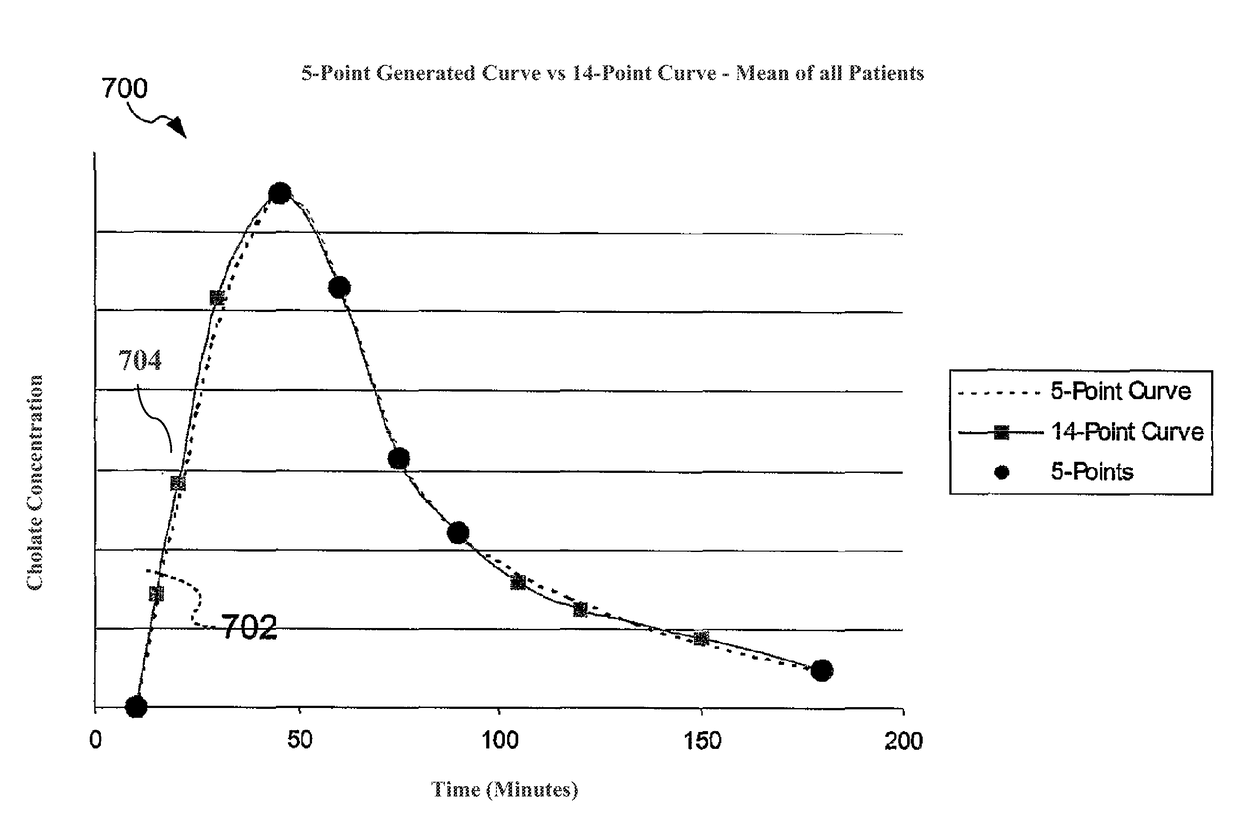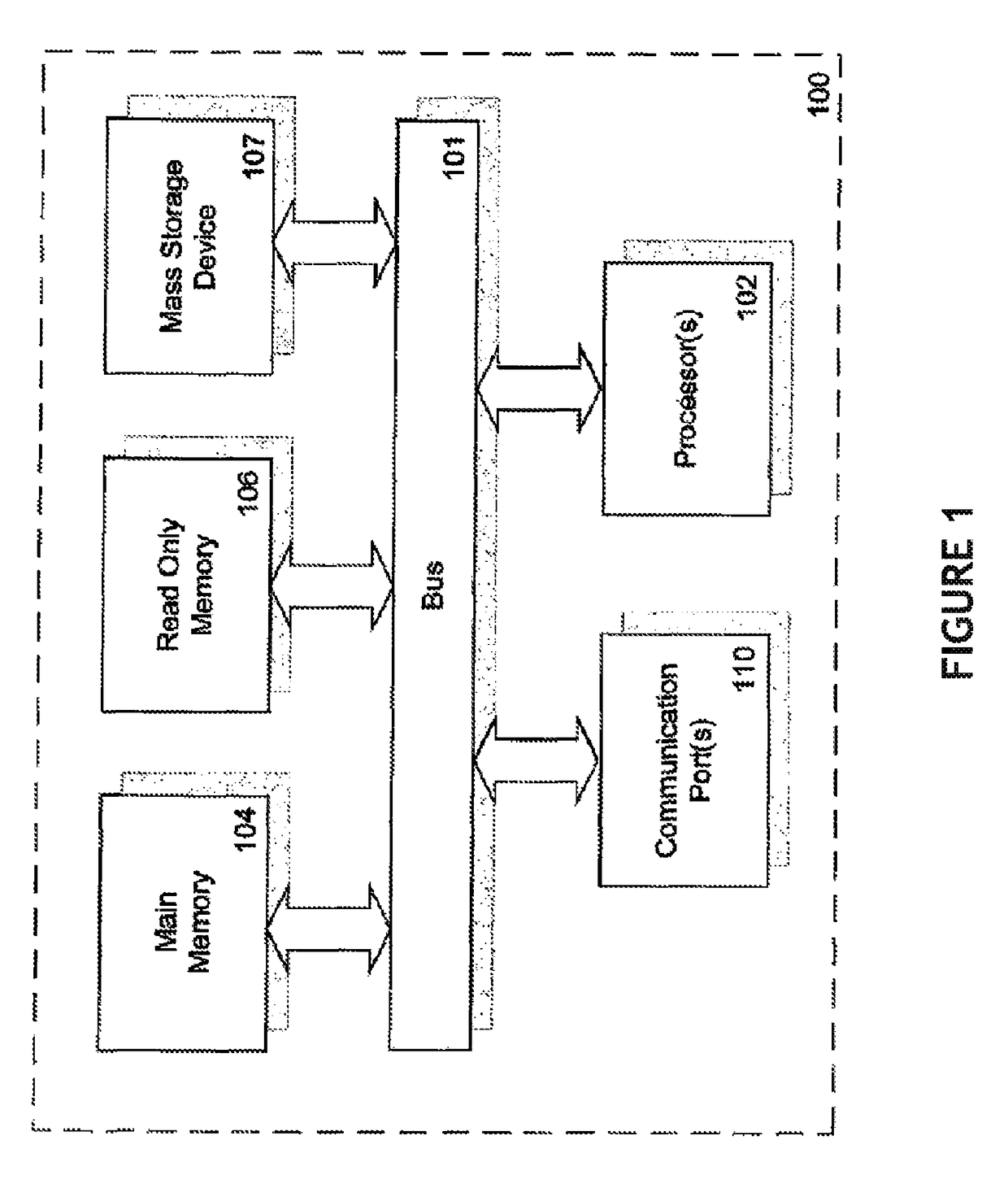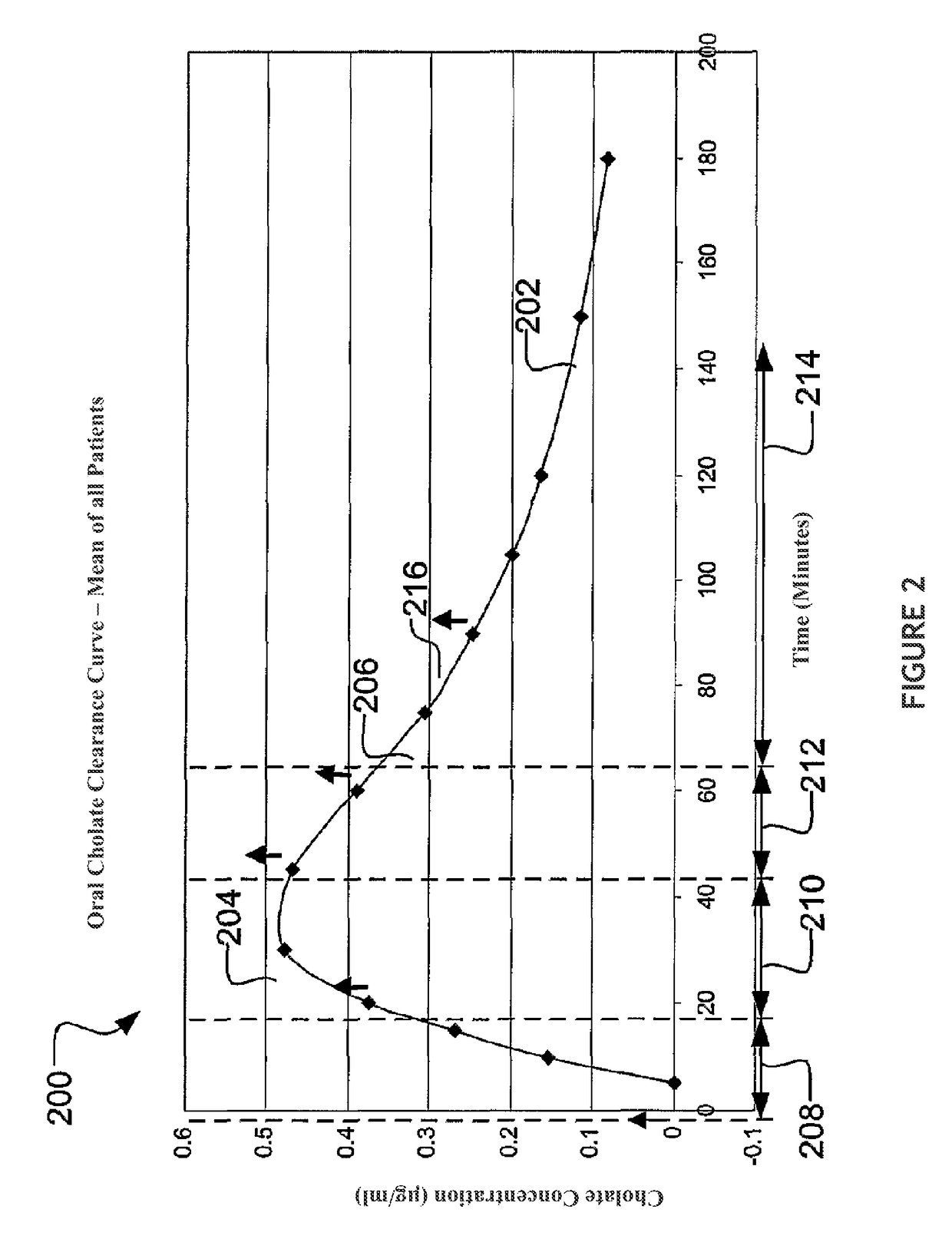Methods for diagnosis and intervention of hepatic disorders
a hepatic disease and diagnosis technology, applied in the field of hepatic disease diagnosis and intervention, can solve the problems of limiting the accuracy of histologic diagnosis and endpoints, affecting the accuracy of diagnosis and treatment, and causing 10,000 deaths annually, so as to achieve rapid assessment of organ health
- Summary
- Abstract
- Description
- Claims
- Application Information
AI Technical Summary
Benefits of technology
Problems solved by technology
Method used
Image
Examples
example 1
[0135]In one exemplary method, two hundred eighty five patients enrolled in a trial (called the HALT-C trial; Hepatitis Antiviral Long-Term Treatment to Prevent Cirrhosis Trial) and participated in a QLFT (quantitative liver function test) ancillary study. Seventy three patients were studied twice.
[0136]Example Patient Protocol: 20 mg of 24-13C cholic acid was dissolved in NaHCO3, mixed with 5 ml 25% human albumin solution and injected through an indwelling intravenous catheter over 2 minutes. 40 mg of 2,2,4,4-2H cholic acid was dissolved in water, mixed in juice and taken orally simultaneously with the intravenous injection. Blood samples were drawn through the indwelling catheter and taken prior to isotope administration and 5, 10, 15, 20, 30, 45, 60, 75, 90, 105, 120, 150 and 180 minutes post-dose to obtain oral and intravenous cholic acid clearance curves.
[0137]Sample Preparation:
[0138]In one example, dispense 0.5 ml patient serum and add 50 ul of Cholic acid standard, set aside...
example 2
[0139]In one example, one analysis was to determine if exogenously ingested and iv administered distinguishable agents are a marker for hepatic conditions not simply an affirmative or negative test for hepatic conditions.
[0140]Example Study
[0141]In one example, 7 QLFTs may be used to define hepatic impairment in patients with chronic hepatitis C and bridging fibrosis or compensated cirrhosis enrolled in the Hepatitis Antiviral Long-Term Treatment to Prevent Cirrhosis Trial (HALT C). Test results can be used to compare those with or without biopsy-proven cirrhosis, splenomegaly on ultrasonography, and varices at endoscopy.
[0142]In one example study the mean age of the 248 enrolled patients was 49.9+7.3 yr and 75% were male. Mean BMI (body mass index) was 29.6+5.3, 40% had cirrhosis, 60% had bridging fibrosis, 93% were infected with HCV genotype 1, and mean serum HCV RNA was 4.39+4.66×106 Copies / ml. 30% had platelet count 1.1 (international normalization ratio prot...
example 3
[0198]An Exemplary Clinical and Biochemical Endpoint Study of Disease Progression. In one example study, two long term studies examined rates of disease progression in patients with HCV with bridging fibrosis and cirrhosis. One study used these estimates to calculate samples sizes for the current NIH treatment trial based upon an equal distribution of noncirrhotic and cirrhotic patients. Disease progression can be defined herein as an increase in fibrosis score of 2 points or more, or development of hepatic decompensation, death from liver disease, or HCC. The following table represents a total sample size that would be required to achieve 90% power for a binomial chi-square test with a two-sided alpha of 0.05.
[0199]
ABCDControl (% / yr)4.05.06.07.0Control (% / 4 yr)15.118.521.925.250% decrease inEndpointsIFN (% / yr)2.02.5.3.03.5IFN (% / 4 yr)8.710.812.814.9N for 90% power1084870728626Noncompliance(5% / yr)IFN (% / 4 yr)9.311.513.615.8N for 90% power13241064890767
[0200]During the first 6 months...
PUM
 Login to View More
Login to View More Abstract
Description
Claims
Application Information
 Login to View More
Login to View More - R&D
- Intellectual Property
- Life Sciences
- Materials
- Tech Scout
- Unparalleled Data Quality
- Higher Quality Content
- 60% Fewer Hallucinations
Browse by: Latest US Patents, China's latest patents, Technical Efficacy Thesaurus, Application Domain, Technology Topic, Popular Technical Reports.
© 2025 PatSnap. All rights reserved.Legal|Privacy policy|Modern Slavery Act Transparency Statement|Sitemap|About US| Contact US: help@patsnap.com



